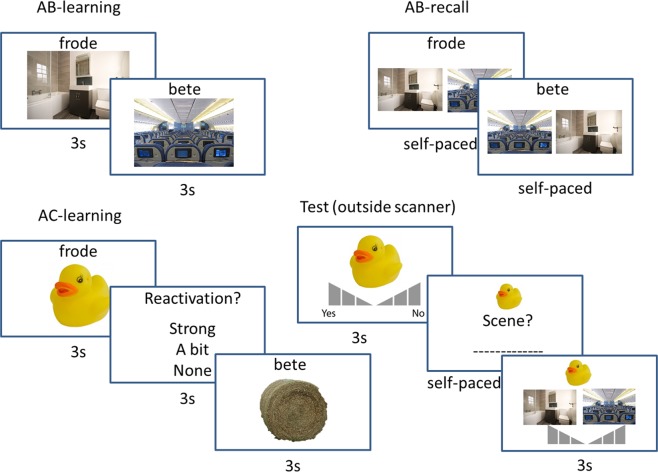Figure 1.
Experimental Design. Participants studied congruent and incongruent associations in an AB-AC inference paradigm (pseudoword – scene – object, e.g. frode – bathroom and frode – rubber duck or bete – airplane and bete – hay bale) in the MR-scanner. After AB-learning, a short AB-recall test was performed to further strengthen the AB-memories. After subsequent AC-learning, participants were asked how well they were able to reactivate B. After the encoding session in the scanner, participants performed a memory test in which they were asked for item recognition of the object, associative recall of the scene given the object, and associative recognition of the scene given the object. Pictures are not exactly the same as in the experiment, but are very similar and rights-free. (Aeroplane image taken from https://commons.wikimedia.org/wiki/File:KLM_Economy1.jpg, licensed under the Creative Commons Attribution-Share Alike 3.0 Unported license - https://creativecommons.org/licenses/by-sa/3.0/deed.en).

